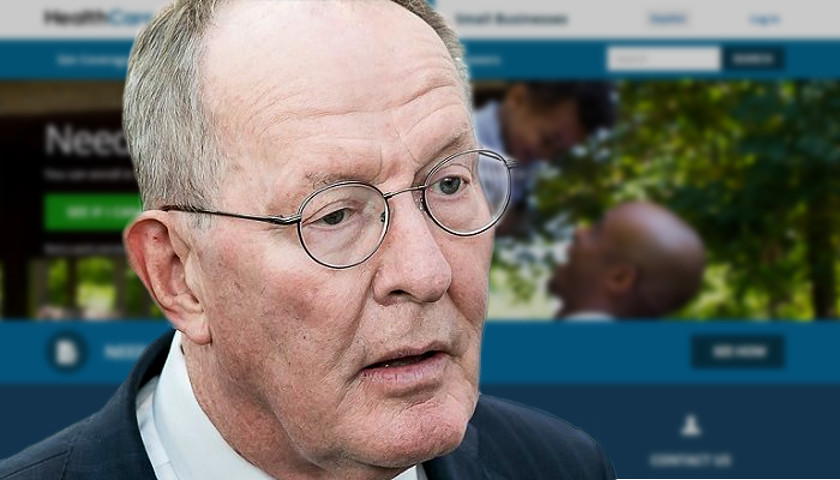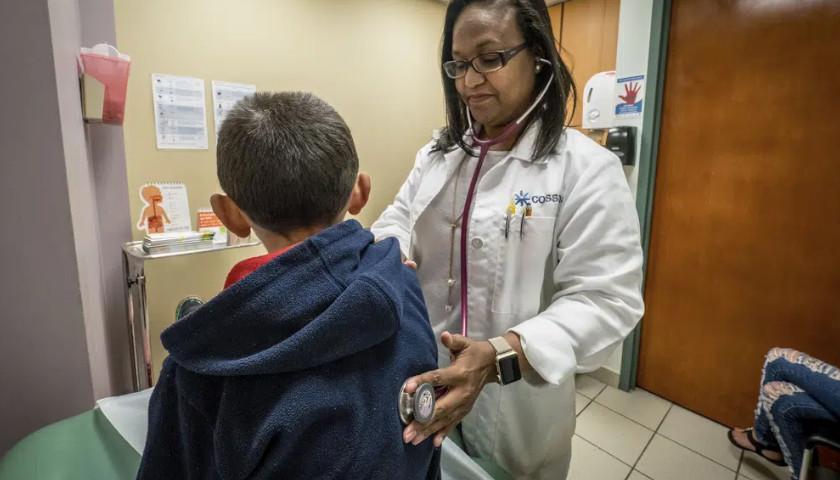At the first of four hearings of the U.S. Senate Committee on Health, Education, Labor and Pensions over the next week, Chairman Lamar Alexander (R-TN) set an aggressive goal of 10 days to make the Affordable Care Act (ACA) Section 1332 Innovation Waivers easier, which could result in lower premiums in the individual insurance market for 2018.
The bi-partisan committee of 23, with a one Republican majority includes Republicans, by rank, Lamar Alexander, Johnny Isakson (GA), Bill Cassidy, M.D. (LA), Pat Roberts (KS), Mike Enzi (WY), Rand Paul (KY), Todd Young (IN), Lisa Murkowski (AK), Richard Burr (NC), Susan Collins (ME), Tim Scott (SC), and Democrats, by rank, Patty Murray (WA), Al Franken (MN), Tammy Baldwin (WI), Tim Kaine (VA), Bernie Sanders (VT), Michael Bennet (CO), Chris Murphy (CT), Maggie Hassan (NH), Robert Casey, Jr. (PA), Sheldon Whitehouse (RI), Elizabeth Warren (MA).
The three-hour hearing held Wednesday, a day after the Senate returned from their regularly scheduled August recess, was named “Stabilizing Premiums and Helping Individuals in the Individual Insurance Market for 2018.”
Witnesses for the hearing, in addition to Tennessee’s Julie Mix McPeak, Commissioner, Tennessee Department of Commerce and Insurance, were four other state insurance commissioners: John Doak, Commissioner, Oklahoma Department of Insurance, Tulsa, OK; Teresa Miller, JD, Acting Health and Human Services Secretary and former Insurance Commissioner of Pennsylvania; Mike Kreidler, OD, Washington State Insurance Commissioner; and, Lori K. Wing-Heier, Director, Alaska Division of Insurance.
Following opening comments by the ranking members Alexander and Murray, the five witnesses gave opening comments of five minutes each and then the hearing was opened for committee members to question the witnesses. Sen. Alexander said in his opening comments that all Senators were invited to a pre-meeting coffee with the witnesses, which 31 Senators attended, showing a “remarkable level of interest,” according to Alexander.
Questions and comments were made by all committee members, other than Sens. Isakson, Scott and Sanders, none of whom appeared to be in attendance.
As Democrat committee members made their comments and asked questions of the expert witnesses, they were decidedly more partisan in nature, taking aim at President Trump’s cuts to “outreach,” otherwise known as advertising, by 90 percent, shortening the open enrollment period and reducing customer assistance by 40 percent and using words such as “sabotage” and “Trumpcare,” even as some cautioned against using “dangerous rhetoric.”
Conversely, other than referring to the ACA as Obamacare, Republican committee members used no such language in trying to understand and deal with the problems the ACA has wrought, including loss of insurance carriers, substantial repeated premium increases along with higher deductibles and co-pays.
The back-and-forth exchanges revealed numerous details on the situations within the states represented by their respective insurance commissioners as well as the committee members. One common theme was that reinsurance, also known as stop-loss, is an important part of the solution. Often referred to as a “bailout” for insurance companies, reinsurance provides stability for carriers in dealing with the sickest 5 percent of insureds, or the high risk pool.
There was also consensus that the other critical element for 2018 premium stability is Cost Sharing Reduction (CSR), which is the discount that lowers the amount insureds pay for deductibles, copayments and coinsurance.
States would like greater control over these two elements of the individual market place and would prefer to receive federal funding through block grants and be allowed to combine their Medicaid savings with the ACA individual market to meet a total “budget neutrality” requirement, versus the current individual budget neutrality requirement.
The Section 1332 Innovation Waiver process that went into effect on January 1, 2017, and allows for states to customize the ACA within certain boundaries, is lengthy and cumbersome, requiring approval by the state’s legislature followed by a six-month review by Centers for Medicare and Medicaid Services (CMS), with no degree of certainty that the waiver will be approved. Only two states – Alaska and Minnesota – have successfully gone through the waiver process.
Sen. Alexander said that there were several suggestions for improving the 1332 waiver process that “ought not be too controversial” – reducing the 6 month waiting period, a provision for a state to utilize a previously-approved application, an application approved by the state’s governor or elected insurance commissioner rather than the legislature – that the committee could agree on in the next 10 days to pass on to the Senate, House and President, making it easier for states to create their own reinsurance and CSR programs for 2018.
This would be step one of the process, proposed Alexander, moving quickly to step 2 for a more long-term, strong viable individual market and other changes that need to be made to the ACA, then spending most of the time on the larger issue of healthcare costs.
Other points of discussion and facts presented included:
• Of the 300 million who have health insurance, the individual market applies to a narrow portion of 18 million people, or 6 just percent of Americans, 9 million of whom receive subsidies.
• Of those who receive health care, 5 percent consume 60 percent of the costs.
• More focus should be put toward addressing health care costs, which have grown from 9 percent of the GDP in 1980 to nearly 18 percent in 2015 and a predicted 20 percent in 2025.
• Transparency, prescription drug costs, excessive paperwork and administrative burden cost increases and encouraging wellness are “low-hanging fruit” relative to the issue of health costs and bringing the costs down is the best way to reduce the cost of health insurance.
• The navigator or customer assistance program, which Democrats complained was being cut by 40 percent, cost $62 million to enroll 81,000 people which equates to less than 1 percent of total enrollees. The top 10 most costly navigators spent $2.7 million to enroll 314 people with one receiving $200K and enrolling just one person. Only 22 percent of navigators achieved their own performance goals, suggesting that greater oversight is needed.
Three more hearings will be held, with the next being September 7 with governors of five states appearing as witnesses, including Tennessee Governor Bill Haslam. The two final hearings on September 12 and 14 will have experts on state flexibility and health care stakeholders, respectively.
Video of Wednesday’s hearing can be found here.






[…] The second of four hearings scheduled by U.S. Senator Lamar Alexander from Tennessee and Patty Murray of Washington as Chairman and Democratic Ranking Member, respectively, of the U.S. Senate Committee on Health, Education, Labor and Pensions on the topic of “Stabilizing Premiums and Helping Individuals in the Individual Insurance Market for 2018,” had the same themes from five Governors as the five Insurance Commissioners from the day prior. […]
Isn’t “aggressive Senate goal” an oxymoron?
I see that the RINO Alexander wants to give away more of my tax dollars to prop up the failed Obamacare. Who needs liberal Democrats when we have Lamar?